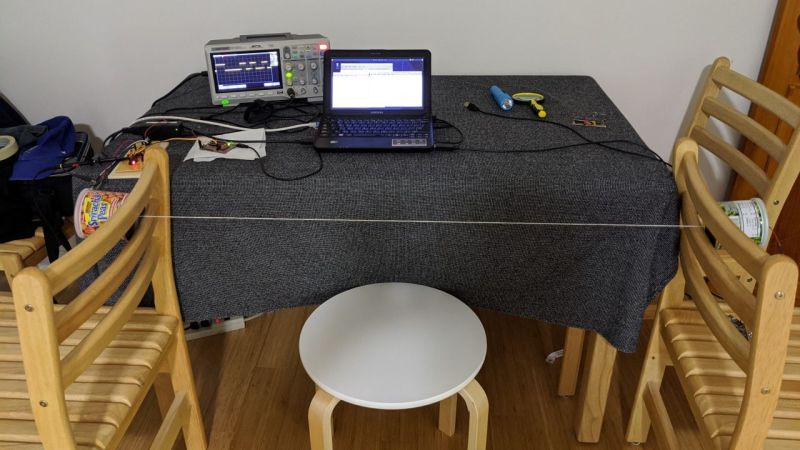Anyone old enough to fondly recall the “bleep-burp-rattle” sequence of sounds of a modem negotiating a connection over a phone line probably also remembers the simple “tin-can telephone” experiment, where a taut string transmits sound vibrations from the bottom of one tin can to another. This tin can modem experiment puts both of those experiences together in a single project.
As [Mike Kohn] notes, this project was harder than it would seem that it should be. He actually had a much harder time getting the tin can phone part of the project optimized than getting the electronics sorted out, resulting in multiple tries with everything from the canonical tin cans to paper coffee cups before eventually settling on a pair of cardboard nut cans, the kinds with the metal bottoms. Linked together with a length of kite string — dental floss didn’t work — [Mike] added a transmitter on one end and a receiver on the other.
The transmitter used an ATtiny 2313 and everyone’s favorite audio amplifier, the LM386, while the receiver sported an electret mike preamp board, an LM566 tone decoder, and an MSP430 microcontroller. The modulation scheme was as simple as possible — a 400 Hz tone whose length varies whether it’s a one or a zero, or a stop or start bit. Connected to a pair of terminal programs, [Mike] was able to send his name over the wire string at what he calculates to be six or seven baud.
This project has all the hallmarks of lockdown boredom, but we don’t care because it’s good fun and a great learning opportunity, particularly for the young ones. There’s plenty of room for optimization, too — maybe it could even get fast enough for the Hackaday Retro 300-baud challenge.
















The speaker sounds so loud, wouldn’t it work without any string at all on such a short distance?
In the video, the string is loosened and there is no sound detected on the ‘scope. Also, if that string wasn’t the correct tension, it would pick up some stuff, but it was mostly just garbage. It took a bit of work to figure out the correct tension.
…thought that this has been covered before with someone managing ADSL speeds.
Or is this my imagination?
No, that was actually running ADSL over a string soaked with brine. It wasn’t acoustic, just a comically terrible conductor.
The Australian government would like to have a chat with you about this potential upgrade path for our National Broadband Network.
It would be funny, if it wasn’t true.
Fiber to the premises, with damp string to the wall outlet?
I wonder is modulation schemes used for ham radio would work better (or at all?)
I demand that this hack implements at least a 16 constellation QAM. Engineers around the world, please unite and help this young man accomplish his mission.